In today’s fast-paced business landscape, effective marketing and brand representation are essential for success. Commercial printing offers a myriad of options to businesses looking to create impactful marketing materials, stationery, and promotional items. Understanding the diverse range of commercial printing methods empowers businesses to make informed decisions that align with their unique needs and marketing goals. In this comprehensive guide, we’ll delve deeper into the various types of commercial printing, shedding light on their benefits, applications, and key considerations.
Digital Printing
Digital printing has emerged as a highly versatile and on-demand solution for brands looking for a quick turn-around. Unlike offset printing, digital printing doesn’t require printing plates, making it more suitable for short print runs and personalised marketing materials. Businesses can efficiently print variable data, allowing for customised content on each printed piece, ideal for direct mail campaigns, business cards, flyers, and event invitations. Digital printing’s quick turnaround times, cost-effectiveness, and superb print quality make it an excellent choice for various marketing needs.
Advantages of Digital Printing
- Personalisation and Variable Data Printing:One of the most significant advantages of digital printing is its ability to personalise each printed piece with variable data. Whether you want to address customers by name, include personalised offers, or create unique QR codes, digital printing allows you to tailor your marketing materials for individual recipients. This level of personalisation enhances customer engagement and response rates, making your marketing campaigns more effective.
- Quick Turnaround Times:Digital printing eliminates the need for lengthy setup times required in traditional offset printing. Without the necessity of printing plates, digital presses can start printing right away, reducing production times significantly. This rapid turnaround is particularly beneficial for businesses with tight deadlines or those who need to quickly respond to market trends and changes.
- Cost-Effectiveness for Short Print Runs:In the past, small print runs could be cost-prohibitive due to the setup expenses associated with offset printing. Digital printing, however, has changed the game by offering cost-effective solutions for short print runs. Whether you need a few dozen or a few hundred copies, digital printing enables you to produce materials efficiently without incurring additional setup costs.
- High-Quality Output:Digital printing technology has made remarkable advancements in print quality. Modern digital presses deliver crisp and vibrant prints that rival the quality of traditional offset printing. The accuracy and precision of digital printing ensure that your designs come to life exactly as envisioned, with rich colours and sharp text and images.
Applications of Digital Printing
- Personalised Direct Mail:Direct mail remains a powerful marketing tool, and digital printing takes it to the next level with personalisation. From postcards to brochures, digital printing allows businesses to create custom direct mail pieces that resonate with recipients, increasing response rates and ROI.
- Business Cards and Stationery:Digital printing is perfect for producing business cards and stationery in small quantities, ensuring that you always have a fresh supply on hand. The ability to print in smaller batches allows businesses to update contact information or designs without wasting materials or incurring additional costs.
- Event Invitations and Promotions:Whether you’re hosting a corporate event, a product launch, or a special promotion, digital printing enables you to create eye-catching event invitations and promotional materials that leave a lasting impression on your guests and customers.
- Custom Marketing Collateral:From brochures and flyers to posters and banners, digital printing offers businesses the flexibility to produce custom marketing collateral in small or large quantities. Whether you’re targeting a specific demographic or promoting seasonal offers, digital printing ensures your marketing materials are visually engaging and impactful.
Wide Format Printing
Wide format printing is all about making a big impact with larger-than-life visuals. This method caters to oversized printing needs, creating attention-grabbing signage, banners, trade show displays, vehicle wraps, and wall murals. Wide format printing utilises advanced inkjet technology to deliver stunning, high-resolution prints that captivate audiences. Whether you’re promoting a product, announcing an event, or enhancing your storefront, wide format printing ensures that your brand message is seen and remembered.
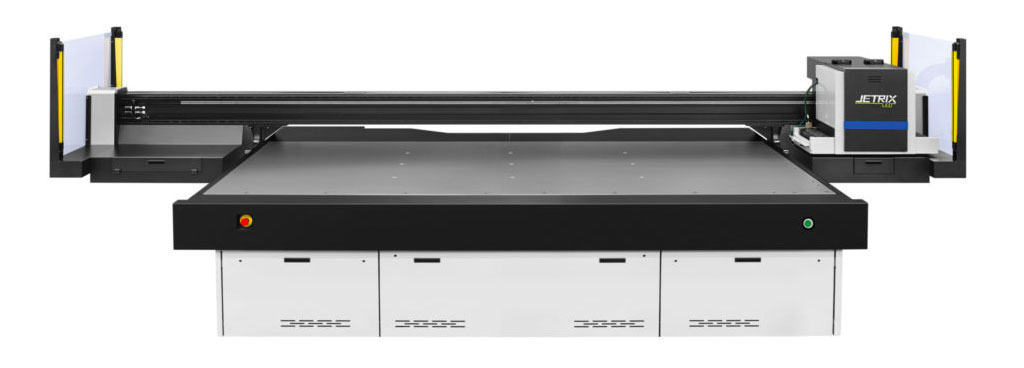
Benefits of Wide Format Printing
- Captivating Visual Impact:The standout feature of wide format printing is its ability to create captivating visuals that demand attention. From vivid colours to high-resolution images, wide format prints are designed to make a lasting impression on passersby and potential customers. Whether it’s an eye-catching storefront banner, a stunning trade show display, or a vibrant wall mural, wide format printing ensures your brand message stands out from the crowd.
- Customisation and Personalisation:Wide format printing allows for unparalleled customization and personalization. Businesses can choose from a vast array of materials, including vinyl, fabric, canvas, and more, to match their specific needs and design visions. This level of versatility ensures that your wide format prints are tailored to your brand identity, objectives, and the environment in which they will be displayed.
- Durability and Longevity:Wide format prints are designed to withstand the elements and endure over time. UV-resistant inks and durable materials ensure that your prints remain vibrant and intact, even when exposed to sunlight, rain, or harsh weather conditions. This durability makes wide format printing ideal for both indoor and outdoor applications, providing businesses with long-lasting marketing materials and promotional displays.
- Versatility in Size and Applications:As the name suggests, wide format printing allows for printing on larger surfaces, providing businesses with the opportunity to make a bold statement with their marketing materials. From large banners and posters to trade show displays, vehicle wraps, and event signage, wide format printing caters to a diverse range of applications. This versatility allows businesses to effectively communicate their message and enhance brand visibility in various settings.
Applications of Wide Format Printing
- Outdoor Signage and Banners:Wide format printing is widely used for outdoor signage and banners due to its ability to deliver visually striking and weather-resistant displays. From billboards and building wraps to street banners and event signage, wide format prints draw attention and reinforce brand presence in outdoor environments.
- Trade Show Displays:Trade shows and exhibitions present a prime opportunity for businesses to showcase their products and services. Wide format printing enables the creation of impressive trade show displays, including pop-up banners, backdrops, and booth graphics, that attract visitors and leave a lasting impression.
- Retail Graphics and Storefronts:In the competitive retail landscape, attracting customers and creating an inviting atmosphere is crucial. Wide format prints allow businesses to transform their storefronts and retail spaces with vibrant window graphics, promotional posters, and visually engaging displays that entice customers inside.
- Wall Murals and Interior Decor:Wide format printing extends beyond promotional materials and can be used to enhance interior spaces. Custom wall murals and interior decor add personality and creativity to offices, restaurants, hotels, and other commercial environments, elevating the overall ambiance and brand experience.
Screen Printing
Screen printing (also known as silk screen printing) is a versatile and durable printing technique that works on various materials, including textiles, paper, plastics, and metals. It involves pressing ink through a fine mesh screen onto the printing surface. Screen printing excels in producing bold, vibrant designs with exceptional colour saturation, making it popular for custom apparel, promotional products, artistic posters, and outdoor signage. The method’s durability ensures that printed materials retain their vibrancy even with frequent use and exposure to the elements. Its ability to handle Pantone spot colours ensures accurate colour matching for brand consistency.
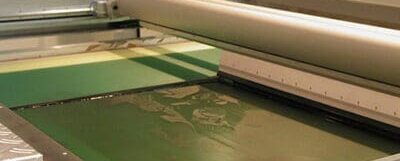
Benefits of Screen Printing
- Vibrant and Long-Lasting Prints:Screen printing is renowned for its ability to create vibrant, high-impact prints that command attention. The thick ink deposits and precise colour saturation result in bold and eye-catching designs that stand the test of time. Whether it’s custom apparel, promotional products, or artistic posters, screen printing ensures your designs leave a lasting impression.
- Pantone Color Matching:One of the key strengths of screen printing is its ability to achieve precise colour matching using the Pantone Matching System (PMS). This standardised colour system ensures consistent and accurate reproduction of brand colours, logos, and other essential brand elements. Maintaining brand consistency across various printed materials is crucial for reinforcing brand identity and recognition.
- Versatility in Substrates:One of the key strengths of screen printing is its versatility in working with diverse substrates. From textiles and paper to plastics, metals, and even glass, screen printing can be applied to a wide range of materials. This flexibility allows businesses to personalise various items with their brand, such as glass, plastics, metals, fabrics, and more, creating unique and memorable promotional products.
- Durable and Fade-Resistant:Screen printing employs thick and durable inks that adhere firmly to the printing surface. This characteristic ensures that screen-printed designs withstand frequent use, washing, and exposure to the elements without fading or losing their visual impact. This durability makes screen printing an excellent choice for apparel, outdoor signage, and promotional items that require longevity.
- Cost-Effective for Bulk Orders:When it comes to producing bulk quantities of branded products, screen printing offers significant cost savings. Once the screens are prepared, the process becomes highly efficient, allowing for rapid and consistent production. Whether it’s for corporate giveaways, team uniforms, or event merchandise, screen printing delivers quality results at a cost-effective price point.
Applications of Screen Printing
- Custom Apparel and Merchandise:Screen printing is a go-to method for creating custom apparel and merchandise. From branded t-shirts and hoodies to tote bags and hats, screen printing allows businesses to showcase their logo, slogan, or artwork on wearable items, effectively turning customers and employees into brand ambassadors.
- Promotional Products:Screen printing excels in producing promotional products that leave a lasting impression. Customised mugs, water bottles, pens, and keychains become tangible reminders of your brand, ensuring that your message stays with recipients long after the initial interaction.
- Event Posters and Art Prints:Screen printing’s ability to deliver bold and vibrant designs makes it a popular choice for event posters and art prints. Whether promoting a concert, art exhibition, or festival, screen-printed posters add a touch of authenticity and artistic flair to your marketing materials.
- Signage and Decals:Screen printing extends to the realm of signage, offering businesses durable and weather-resistant options. Custom decals and signage with vivid graphics effectively draw attention to storefronts, vehicles, and promotional displays.
Lithography Printing (Offset Printing)
Lithography printing, also known as offset printing, remains a dominant force in commercial printing. This method is well-suited for high-volume productions due to its efficiency and cost-effectiveness. Offset printing involves transferring ink from a metal plate to a rubber blanket and then onto the printing surface. The process delivers sharp and consistent prints with vibrant colours, making it ideal for brochures, catalogues, magazines, and large-scale posters.
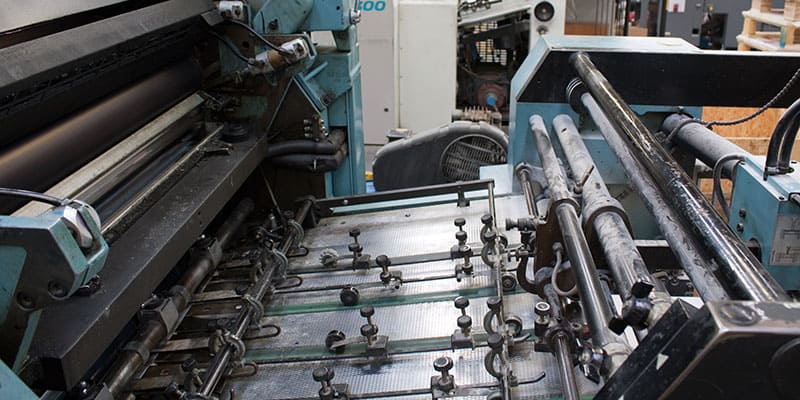
Benefits of Lithography Printing
- High-Quality Reproduction:Offset printing is renowned for its exceptional print quality. The process involves transferring ink from a metal plate onto a rubber blanket, which then transfers the image onto the printing surface. This precise transfer mechanism ensures sharp and accurate reproductions of intricate designs, text, and images, making it ideal for producing marketing materials that demand fine detail and clarity.
- Cost-Effectiveness for Large Print Runs:Offset printing excels in high-volume productions, offering significant cost savings for large print runs. Once the printing plates are set up, the per-unit cost decreases significantly with each additional print, making it an economical choice for businesses requiring a large quantity of marketing materials.
- Versatility in Paper and Substrates:Offset printing can be performed on a wide range of paper and substrates, from lightweight papers for brochures and flyers to thick cardstocks for business cards and postcards. This versatility allows businesses to select the most suitable materials for their specific marketing objectives and target audience.
Applications of Lithography Printing
- Brochures and Catalogues:Brochures and catalogues play a crucial role in showcasing products and services to potential customers. The high-quality output of offset printing ensures that these marketing materials look professional, compelling, and visually appealing, making a lasting impression on recipients.
- Magazines and Publications:Offset printing remains the preferred choice for magazine and publication printing due to its ability to handle high-volume runs while delivering consistent print quality. From glossy pages to vibrant images, offset printing enhances the visual appeal of magazines and publications, attracting readers and advertisers alike.
- Posters and Banners:When it comes to eye-catching promotional materials like posters and banners, offset printing shines. The precise colour matching and sharp imagery of offset prints create impactful visuals that stand out in both indoor and outdoor settings, capturing the attention of passersby and potential customers.
- Corporate Stationery:From letterheads and envelopes to business cards and presentation folders, offset printing elevates the professionalism of corporate stationery. The high-quality and crisp output ensure that your brand materials reflect the values and image of your business.
Flexographic Printing
Flexographic printing is widely used in the packaging industry for label printing, flexible packaging, and corrugated cardboard boxes. It employs flexible rubber or photopolymer plates to transfer ink onto the printing surface. Flexographic printing is known for its cost-effectiveness, high-speed production capabilities, and ability to handle various substrates, including plastics, films, and paper. It is commonly used in food packaging, labels, and retail packaging, where consistent and high-quality prints are essential.

Benefits of Flexographic Printing
- Cost-Effective for High-Volume Runs:Flexographic printing is highly efficient for large print runs. Once the flexible rubber or photopolymer plates are prepared, the process becomes fast and economical, making it a preferred choice for businesses requiring high quantities of labels, packaging, and other printed materials.
- Versatility in Substrates:One of the primary advantages of flexographic printing is its adaptability to work with a wide range of substrates. From flexible packaging materials like plastics and films to paper and corrugated cardboard, flexographic printing can accommodate various materials, ensuring seamless integration with packaging needs across industries.
- Consistent Print Quality:Flexographic printing delivers consistent and precise prints, thanks to its precise plate-to-substrate contact. The printing plates, mounted on rotating cylinders, transfer ink onto the substrate with accuracy, resulting in sharp and vibrant designs. This uniformity is especially crucial for brand packaging, where colour consistency and print quality are essential to maintaining brand integrity.
- High-Speed Production:Flexographic printing is known for its high-speed production capabilities, making it an ideal choice for businesses with tight timelines or demanding production schedules. The efficient process ensures that print orders are completed promptly without compromising on print quality.
Applications of Flexographic Printing
- Packaging and Labels:Flexographic printing is a leading choice for packaging and label printing. From food and beverage packaging to pharmaceutical labels and retail product packaging, flexographic printing ensures crisp and attractive designs that catch the consumer’s eye. The versatility of the process allows businesses to create labels for bottles, boxes, bags, and more.
- Flexible Packaging:As consumer preferences evolve, flexible packaging has gained popularity for its convenience and sustainability. Flexographic printing’s compatibility with flexible materials, such as plastic films and pouches, enables businesses to produce eye-catching and informative flexible packaging for a variety of products.
- Corrugated Packaging:In the realm of corrugated packaging, flexographic printing proves to be indispensable for branding and informational printing on shipping boxes and cartons. Its efficiency in handling corrugated materials makes it an economical choice for large-scale shipping and packaging requirements.
- Tags and Tickets:Flexographic printing is also employed in creating tags, tickets, and other specialty printed items. The process’s ability to print on various tag materials, such as cardstock and synthetic papers, makes it a versatile solution for retail, event management, and inventory purposes.
Navigating the world of commercial printing can be an empowering experience for businesses and individuals seeking to elevate their brand presence and marketing efforts. Each commercial printing method offers unique benefits, from offset printing’s cost-effective high-volume production to digital printing’s flexibility for personalised marketing. Wide format printing captivates audiences with attention-grabbing visuals, while screen printing provides vibrant, durable designs on various materials. Flexographic printing and gravure printing cater to specialised needs, such as packaging and high-end publications.
As you explore the different types of commercial printing, it’s essential to consider factors such as budget, print volume, design complexity, and desired print quality. Collaborating with a professional print service provider can help businesses make informed decisions and achieve optimal results that resonate with their target audience. By leveraging the power of commercial printing, you can leave a lasting impression, effectively communicate your message, and elevate your brand to new heights of success.
Get in touch with us here at Screentec and we can quickly advise you on the best print method to use for whatever you’re looking to produce!
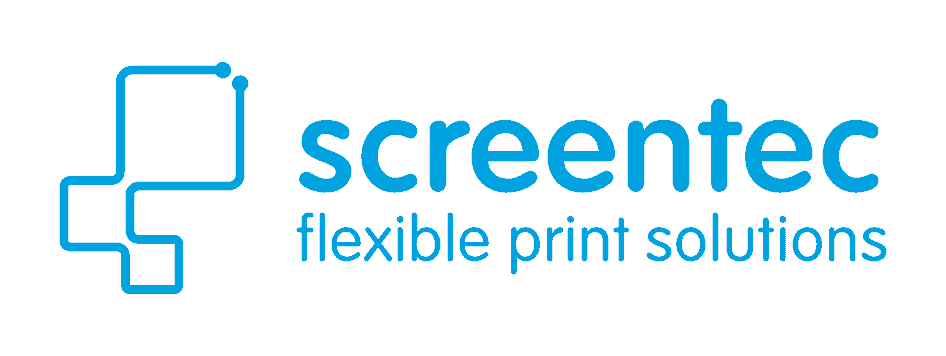
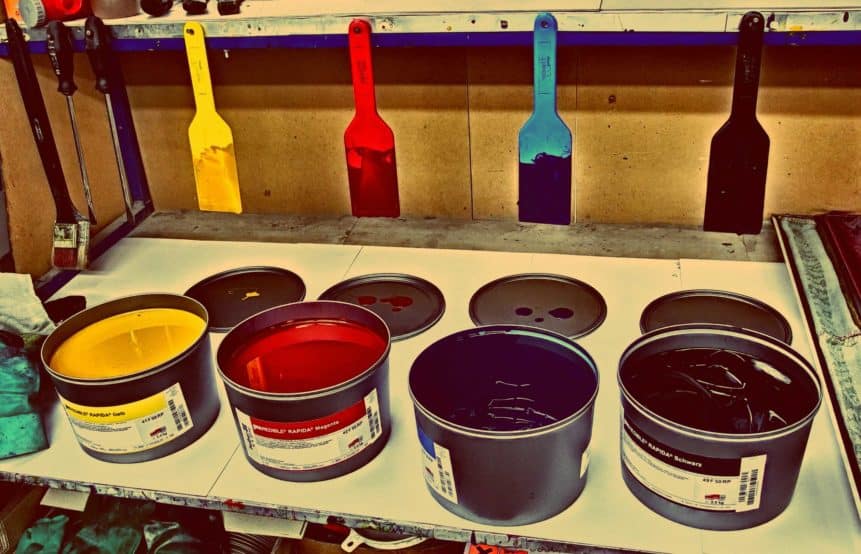
Recent Comments